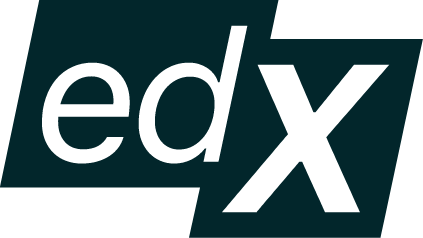
In the world of library and information science, honing your interview skills is like finding the perfect book — it’s essential for success! Ensure you can effectively communicate your expertise and relevant experiences to prospective employers, as it can significantly enhance your chances of success in this field.
This guide offers a compilation of sample interview questions and provides tips on crafting your responses to commonly asked interview questions about library and information science.
Interview questions by category
We have categorized the interview questions into three sections. Feel free to read straight through or jump to the sections that interest you most.
Tell me about yourself.
This is the most common and one of the most dreaded interview questions because it is so broad. Here is a useful formula for developing an answer to this question:
- Present — Talk a little bit about your current role or educational program, the scope of it, and perhaps a recent accomplishment.
- Past — Tell the interviewer about your background experience and education. Be sure to mention previous experience that’s relevant to the job and company you’re applying to.
- Future — Segue into what you’re looking to do next. Tell the interviewer why you’re interested in this role and why you’re a great value-add.
Your snapshot should show the interviewer how your experiences equip you with the skills to succeed at their company and why you are interested in the specific role.
Pro tip:
Your answer to “Tell me about yourself” could determine the direction of the interview. Typically, what the interviewer asks next will be a follow-up question based on your answer. It’s almost like you get to control where the interview goes! It is highly recommended that you prepare your answer to this question before each interview. Practice delivering your answer to ensure it is relevant and leads to follow-up questions that allow you to shine.
What are your greatest strengths and weaknesses as a library and information science professional?
Describing your strengths gives you an opportunity to brag about what makes you awesome and why you’re a great value-add to the company. Discuss 1–3 specific qualities that are relevant to this position and illustrate them with examples. Stories are always more memorable than generalizations.
When an interviewer asks you about your weaknesses, they’re trying to get a gauge on your self-awareness and honesty. Strike a balance by thinking of something that you struggle with but that you’re currently working to improve. For example, maybe you’ve never been strong at public speaking, but you’ve recently volunteered to run meetings to help you get more comfortable when addressing a crowd.
Why do you want to work at this company?
Demonstrate that you’ve researched the company and talk about the unique aspects of the company that made you want to apply for a role. You can point out the organization’s growth or innovation while honing in on your own opportunities for future career growth and how the company can contribute to it. Keep your reply high-level and not overly personal. Be specific and enthusiastic in explaining why you want to work for the company.
Where do you see yourself in five years?
If asked this question, be honest and specific about your future goals. The hiring manager wants to know: a) if you’ve set realistic expectations for your career, b) if you have ambition, and c) if the position aligns with your goals and growth. Think realistically about where this position could take you and answer along those lines. If the position isn’t necessarily a one-way ticket to your aspirations, it’s okay to say that you’re not quite sure what the future holds, but that you see this experience playing an important role in helping you make that decision.
What are your salary expectations?
The number one rule of answering this question is to prepare thoroughly ahead of time. Do your research on what similar roles pay by using websites like Payscale.com or Salary.com and reach out to your network. Be sure to take your experience, education, skills, and personal needs into account. From there, choose from one of three strategies to answer the question:
- Give a salary range — keep the bottom of your stated range toward the mid-to-high point of what you’re actually hoping to get.
- Flip the question — you can say something like: “That’s a great question. Can you share the range you have in mind for this role?”
- Delay answering — tell your interviewer that you’d like to learn more about the role or the rest of the compensation package before discussing pay.
How do you approach organizing and classifying information to ensure efficient retrieval and accessibility for library and information systems users?
To ace this question, start by highlighting the importance of user needs. Emphasize a systematic approach — sorting materials logically, leveraging cataloging systems, and embracing technology for seamless access. Also include how you solicit user feedback for continuous improvement. Finally, consider telling a story about a time that your information management work met or exceeded user needs and desires.
Can you discuss your familiarity with library management systems and other relevant technologies used in modern libraries?
Similar to many other industries, library and information science is frequently impacted by technological innovations and updates. Employers want to hire individuals who are open to technology and can utilize it to build better library and information systems. Spotlight your hands-on experience with library management systems, like integrated cataloging and circulation software. Highlight proficiency in digital resources and mention any tech-savvy initiatives you’ve led, such as implementing radio frequency identification (RFID) or enhancing online databases.
Pro tip:
Seize every chance during the interview to demonstrate how your skills align with those specified in the job description. In response to the question above, highlight your familiarity with the technologies mentioned in the job description. It is always best to demonstrate to the employer that you’re a strong fit for the job, rather than relying on them to make the connection on their own.
Describe your experience in working with diverse communities and tailoring library and information services to meet their specific needs.
Demonstrate your commitment to inclusivity by providing examples of outreach programs or events you’ve organized for diverse communities. Additionally, emphasize any relevant certification or training programs that you have completed (these should also be listed in your resume). Finally, consider telling a story about a time in which your work positively impacted a person or group of people with specific needs.
How do you handle challenges related to copyright, intellectual freedom, and privacy concerns in a library setting, and how do you ensure compliance with relevant policies and regulations?
This question addresses a topic that has garnered significant attention in the media and ignited controversy. In an interview setting we recommend giving a response that is informed and respectful of others. Demonstrate your understanding by outlining your approach to navigating copyright laws, balancing intellectual freedom, and safeguarding privacy. Emphasize the importance of respecting library users’ privacy while upholding legal and ethical standards, showcasing a commitment to maintaining a delicate balance between access and protection.
Discuss your experience with grant writing and fundraising for library programs or initiatives.
When you are asked to describe a situation or tell a story about an experience, we recommend using the STAR Method. (Learn more about the STAR Method in our Behavioral interview prep guide.) In response to this question, your answer should follow the structure listed here:
- Situation — Describe the specific library program or initiative that required funding and the funding opportunity that you sought out.
- Task — Outline your role and responsibilities in securing the funding.
- Action — Share the steps that you took, such as, researching funding opportunities, crafting a compelling proposal, and engaging with donors.
- Result — Discuss the outcomes of your efforts and connect how your actions led to positive results. If possible, quantify the results by sharing the amount of funding secured or the impact that the funding had on the program.
Expert advice
“When you’re gearing up for an interview, consider involving your significant other, sibling, friend, or anyone you trust. Ask them to step into the role of the interviewer. Collaborating with individuals who are intimately familiar with your personality can prove to be both a beneficial and enjoyable method for pinpointing areas where you can improve.”
– Colin L., career expert at edX

How do you assess the impact of library programs or services on the community, and what metrics do you use to measure success?
Utilizing data to make decisions is an essential part of leadership. Employers ask this question to ensure you possess the necessary data skills to lead their teams. In your response, clearly outline a systematic approach to identifying community needs and collecting data to measure the effectiveness of meeting these needs. Employers are interested in specific quantitative metrics such as attendance, utilization, and survey results, so make sure to include these in your response.
Can you share an experience where you successfully implemented a new library and information science program or service?
When you are asked to describe a situation or tell a story about an experience, we recommend using the STAR Method. (Learn more about the STAR Method in our Behavioral interview prep guide.) In response to this question, your answer should follow the structure listed here:
- Situation — Set the stage by describing the context which prompted a need for a new library program or service.
- Task — Outline your role and responsibilities in implementing the program. Highlight any objectives that you aimed to achieve or challenges that you anticipated.
- Action — Describe the steps you took to implement the program. Discuss your planning, the resources you mobilized, and any collaborations.
- Result — Conclude by sharing the outcomes of your efforts. Make a direct connection between the actions that you took and the success of the program.
How do you approach building and maintaining relationships with local schools, educational institutions, and community organizations to strengthen the library’s ties to the community?
Employers pose this question to gauge your proficiency in representing their organization to external partners, such as schools and community groups. Start by explaining how you initiate collaborations and build relationships. Highlight the value of tailored partnerships, such as joint events or resource-sharing initiatives, to reinforce community ties. Finally, consider sharing a story about a situation in which you built a strong relationship with a community partner.
Pro tip:
You don’t just contribute your skills and expertise to a role; you also bring with you a valuable network of connections. When answering this question, you might want to highlight specific individuals or organizations within your network who could be particularly beneficial or relevant to the employer.
How do you foster a culture of continuous learning and professional development among library and information science staff?
Cultivating a culture of continuous learning and professional development among library and information science staff takes a multifaceted approach. Here are a few approaches that you may consider mentioning:
- Personalized development plans tailored to individual goals and institution objectives.
- Peer collaboration through knowledge-sharing forums and mentorship programs.
- Regular training sessions, workshops, and access to relevant resources.
As you describe your approach, emphasize your commitment to fostering a supportive environment that values curiosity and innovation.
Provide an example of successful budget management and resource allocation in your previous library and information science leadership roles.
This is another question for which we recommend using the STAR Method to structure your response. In response to this question, your answer should following the structure listed here:
- Situation — Briefly describe the budget that you managed and the resources that you were responsible for funding.
- Task — Outline the objective that you were aiming to achieve in relation to budget management.
- Action — Describe the actions you took to address the task. Be sure to emphasize any skills or strategies that you utilize to make decisions and manage the work.
- Result — Detail the positive outcomes of your actions. Whenever possible, provide quantitative results about the budget and how your decisions positively impacted the organization.



